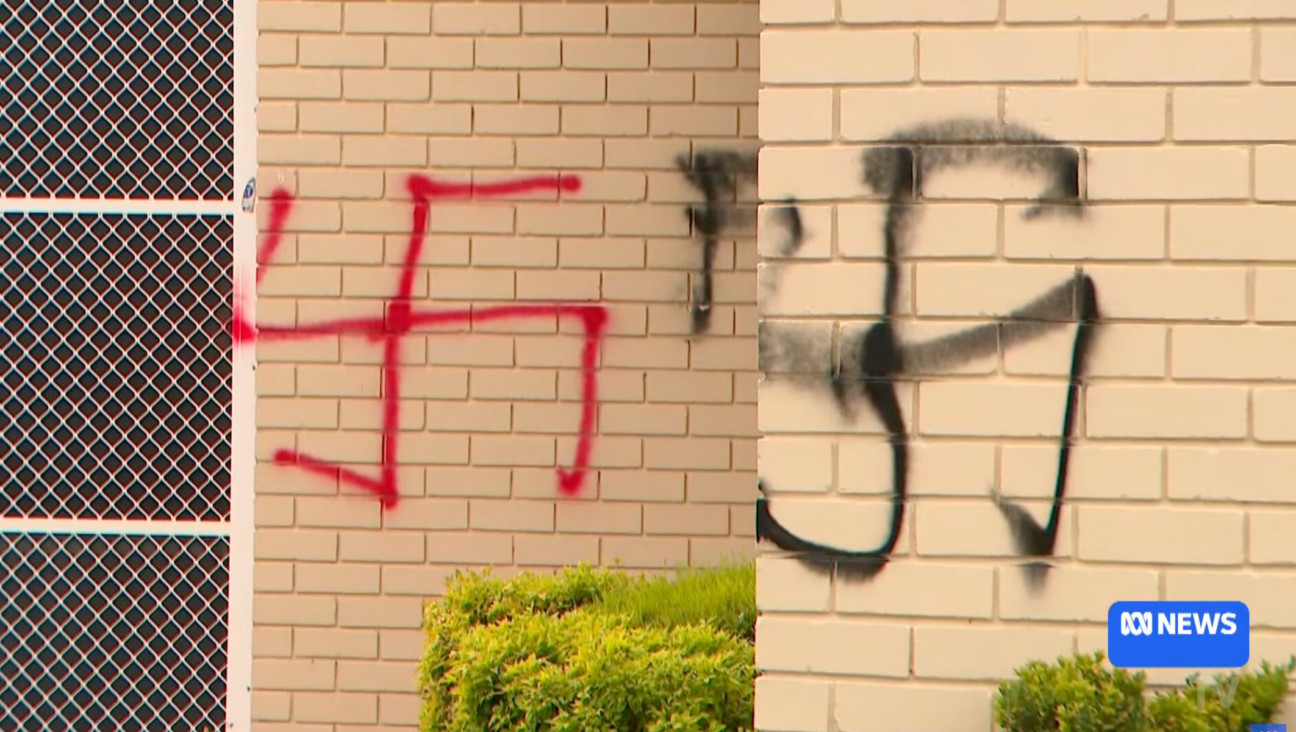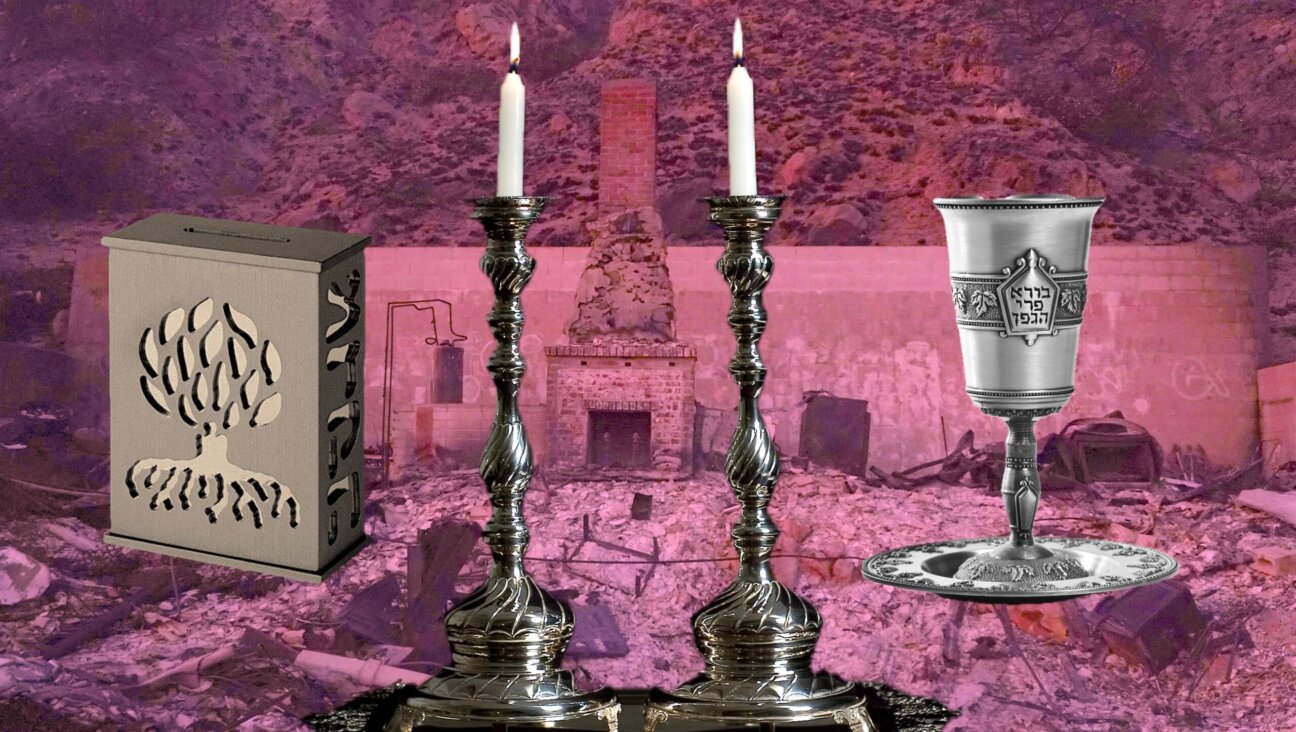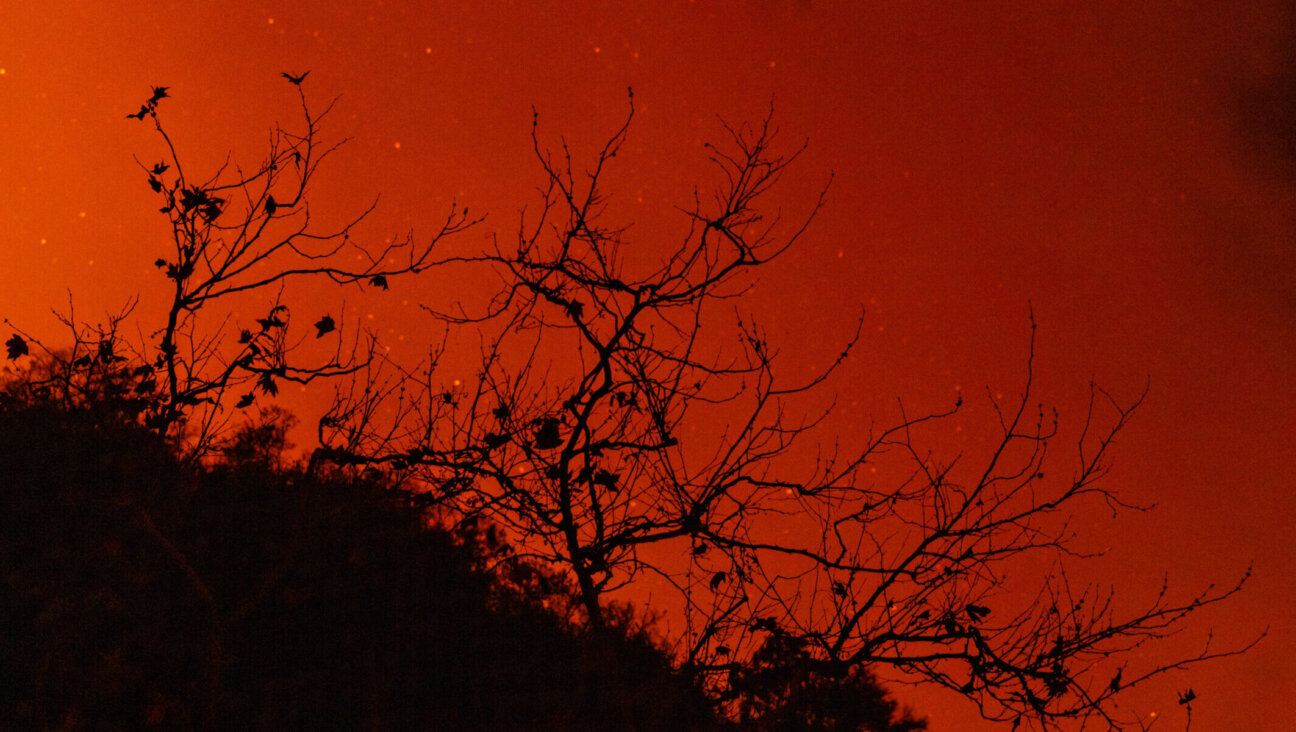Jewish Community Dying In Home Of Satmar Hasidic Dynasty

Image by getty images
SATU MARE, Romania (JTA) — The small congregation in this northern city consists of only 110 members. Yet the Satu Mare Jewish community owns an impressive 129 cemeteries and four synagogues.
Among the heritage sites in its care is the Decebal Street Synagogue, an ornate behemoth of a building erected in 1892. It was designed in the Moorish style to accommodate 1,000 worshippers under its spired roof, and its gable boasts a 6-foot marble replica of the tablets of stone upon which the Ten Commandments were inscribed.
Before the Holocaust, prayers were led here by none other than Rabbi Joel Teitelbaum, the late founder of the Satmar movement of Hasidic Judaism. The Satmars, who derive their name from this Romanian city, are today one of the largest Hasidic dynasties in the world.
But to the Jewish community in Satu Mare today, this wealth is “also a burden,” according to Paul Decsei, a businessman who is responsible for administering the dozens of communal real-estate assets. Now teetering on the brink of disappearing, his once great community doesn’t even use the stunningly beautiful synagogue it owns because it can afford neither to heat it nor provide the badly needed renovations.
Unused, overgrown with weeds and falling into disrepair, the great cultural assets of Romanian Jewry are a testament to the near annihilation of the country’s Jewish community, which numbered 800,000 prior to World War II. At the same time, what remains is evidence of the tenacity of the 7,000 Jews who still live in the country and have fought to to preserve, with meager means, what their ancestors left behind.
Nicolae Decsei, Paul’s father and the president of the Jewish community, was able to raise enough funds to renovate the Decebal Street Synagogue’s sunken floor in order to keep the structure from collapsing. But the interior walls are badly corroded from the effects of a 1970 flood that was never properly drained from the foundations, he said.
The building does not contain a Torah scroll and thus is not considered a kosher house of worship. But it is still considered structurally sound enough for the occasional concert. Still, Paul Decsei said, its future is uncertain without an extensive restoration.
Some Romanian Jewish communities rent out or sell the properties that were returned to them after the Holocaust. Buildings that once housed synagogues, yeshivas and Jewish schools throughout Romania — and across Eastern and Central Europe, in general — now accommodate businesses such as restaurants, dance clubs, garages and barbershops.
Satu Mare has that option as well, of course. But the return would be relatively meager — land outside Bucharest comes cheap — and result in a loss of a major cultural asset, Decsei said.
The community relies on a sole source of funding: the Bucharest-based Federation of the Jewish Communities in Romania. The central board allocates the income it receives from its properties, as well as the government, to Jewish communities across the country. And although the cost of building maintenance is a factor in the allocation process, congregations with larger memberships — such as Bucharest, Brasov and Timosuara — tend to be better funded than smaller ones.
As it stands, Satu Mare cannot afford to hire a rabbi.
“In truth, this building is a drain on our resources, as are the hundreds of graves we need to preserve and fence,” Decsei said. “But on the other hand, we can’t walk away from any of it. It’s our heritage and we have a responsibility toward it.”
The Satu Mare community today is a Neolog congregation — a Central European stream of Judaism that is a mix between Orthodox and Conservative. When congregants pray, they do so in the annex of a newer, smaller synagogue adjacent to the Decebal Street Synagogue. That synagogue, built in 1921, also is showing signs of neglect in a country where the average monthly salary is less than $500. The congregation rarely has a minyan, the quorum of 10 Jewish men necessary for some Orthodox prayers.
Separating the massive Moorish synagogue from the smaller yet still ornate shul is a monument memorializing the 300,000 Holocaust victims who once lived in Transylvania, the historic region of which Satu Mare is a part.
Once intellectual and prosperous, the Jewish community in a region made famous by the legend of Count Dracula was essentially wiped out in early 1944. Now its character is evident only in the architectural sophistication of its buildings. The smaller shul in Satu Mare has a board with the names of the weekly Torah portions appearing on a rotating wheel that the rabbi would turn each week. But it has remained untouched since the deportations of April 1944 — since then, the wheel has remained at Kedoshim, Hebrew for “martyrs.”
The predicament facing the Satu Mare community is not unique in Central Europe, where the Nazis wiped out communities whose few surviving members emigrated en masse after the Holocaust. But it is particularly striking in Transylvania, whose Jews had experienced a golden age just before the genocide, according to Robert Frolich, the rabbi of the Dohany Synagogue in Budapest, in neighboring Hungary.
Nowhere is the massive scope of Jewish life in Transylvania more evident than in the Jewish cemetery of Sighet, the hometown of the author Elie Wiesel that is situated 65 miles east of Satu Mare near the Ukrainian border. Covering an area larger than five football fields, the cemetery has thousands of large headstones and several mausoleums. It is one of Central Europe’s largest Jewish cemeteries not destroyed by Nazis or communists.
Today, the Jewish community of Sighet, where 14,000 Jews lived before the Holocaust, comprises only 55 Jews, none under 60, according to the president of that community, David Lieberman. Lieberman, a 69-year-old forestry specialist, moved back to Romania after retiring in Israel. He had immigrated there in the 1960s.
“The truth is that it’s very painful,” Lieberman said when asked about how it feels to lead a community that is “a shadow of its former self,” as he put it.
“I’m trying to keep this community alive, playing the part of a rabbi, but the truth is it is fading into oblivion,” he said. “And that’s particularly painful to me because I know how wealthy, magnificent, intellectual and spectacular this community used to be.”
Still, in recent years, Sighet, a city of 35,000, is seeing an increase in Jewish presence thanks to tourists from Israel and beyond who want to see the birthplace of Wiesel, a Nobel Peace Prize laureate who died last year at 87.
Since the 2002 opening of a museum in his childhood home commemorating the deportation of 14,000 Sighet Jews, including Wiesel, hundreds of Jewish tourists began visiting there each year. Today, more than half of all tourists to the town are Jewish, according to radio journalist Johnny Popescu. Popescu, who is not Jewish, published last year the English-language translation of what Lieberman and others said was the first major historical study of Sighet’s Jewish community.
“Wiesel put us on the map internationally,” Popescu said.
Last week, the Limmud FSU group, which organizes Jewish learning conferences for Russian-speaking Jews, organized a memorial march for Wiesel through Sighet.
But can interest in Wiesel boost Jewish life in Sighet — or greater Transylvania — in any significant way?
Unfortunately, Lieberman doesn’t think so.
“It’s just another monument, you see,” he said. “It doesn’t change the reality of a community that is about to disappear before our very eyes.”
A message from our Publisher & CEO Rachel Fishman Feddersen

I hope you appreciated this article. Before you go, I’d like to ask you to please support the Forward’s award-winning, nonprofit journalism so that we can be prepared for whatever news 2025 brings.
At a time when other newsrooms are closing or cutting back, the Forward has removed its paywall and invested additional resources to report on the ground from Israel and around the U.S. on the impact of the war, rising antisemitism and polarized discourse.
Readers like you make it all possible. Support our work by becoming a Forward Member and connect with our journalism and your community.
— Rachel Fishman Feddersen, Publisher and CEO























